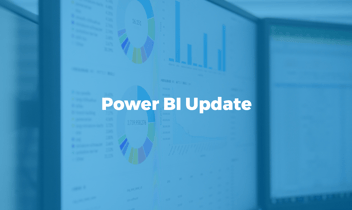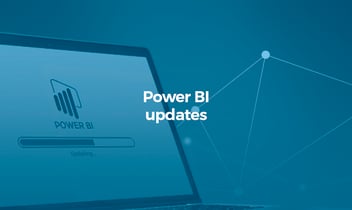Power BI is constantly launching updates. In this post we share the 9 most relevant updates from the past few months.
Microsoft has launched many new features for its Business Intelligence Power BI tool over the last few months. These updates are framed in the technical aspects of the application, as well as in the functional and usage aspects.

1. Email and on-demand subscriptions
Until now you had to enter the application to see the most updated information. Power BI now allows you to create subscriptions to the most relevant report pages and dashboards.
That means you'll receive a snapshot by email according to the selected frequency. These snapshots can be received immediately or scheduled to be received periodically. They can be scheduled by date or by time (each a certain number of hours, days, etc.).
With this functionality, you can have a report every morning or monthly, for example, to know the status of the business or for the presentation of results.
2. Export Power BI reports in PDF
Power BI only allowed to consult their reports on the web or in the application, so that in order to include them in the reports had to give access to the interested person or make screenshots.
Now there is the possibility of generating PDF ready to deliver. Together with the functionality of dynamic explanatory texts, it allows to deliver very complete and detailed reports without wasting hours and hours capturing screens and making summaries and reports.
In addition, there is the new possibility of exporting Power BI with the filters applied, instead of the whole report by default.
The possibility of exporting to Power Point has also been incorporated. Thus, while PDF export is ideal for presenting results, PPT export is very useful for adding reports to Power Point presentations without the need for screenshots.
3. Data lineage for data flows
The data lineage allows you to track the origin and processes through which the data passes, i.e., how it passes from Big Data to Business Intelligence. It is very useful for data auditing and for detecting the root of errors and problems.
This new functionality allows to have this knowledge of the data that are part of data flows.
4. Inserting secure Power BI reports on internal websites or portals
The new possibility of inserting Power BI reports securely on websites or internal portals allows you to save reports in your own cloud or local environment securely and easily.
The included reports thus respect all the permissions of the element and the security of the data. This function allows the insertion without code in any portal that accepts the insertion of a URL address or an iFrame.
5. Preliminary public version of paginated reports in Power BI Premium
Paginated reports are one of Power BI's recent additions. These are reports designed to fit on a single page. They display information in a table and are easy to print and share.
Paginated reports can consist of many pages. Their main feature is that it is possible to decide their format to suit your specific needs. In addition, a paginated report can have several different data sources and, unlike Power BI reports, do not have an underlying data model.
6. Data size and number of data sets in memory in the Capacity Monitoring application
In mid-2018, Microsoft announced the launch of a new application called Capacity Monitoring. This application allows you to keep track of Power BI's premium features and get the most out of them, as well as maintain them.
This update increases the application's capacity in terms of data size and the number of data sets in memory.
7. Dashboard Comments on Power BI
Microsoft has always encouraged conversation around data. They are aware that once a report is published, the conversation continues in meetings, e-mails... Their goal with the new comment functionality is to allow this conversation to continue directly in the reports.
Comments can be added to dashboards or in specific visuals and allow you to mention other people to include them in the conversation.
8. Support for persistent filters on custom visual objects
Persistent filters arrived at Power BI in early 2018. This functionality allows filters and other modifications in the data display to be maintained automatically. So you don't have to waste time configuring the display every time you access the application.
Until now Power BI only allowed to put persistent filters in the visual objects that come by default in the report and not in the customized ones. However, with this update, you can keep persistent filters on your ad hoc modified visual objects.
9. Power BI Product Notes on Data Protection
The new Data Protection Regulation GDPR came into force in May 2018. It is logical that Power BI adapts to this new regulation.
In addition, the application allows audits per region. In compliance with the Regulation, European data must be hosted in European data centers. Power BI facilitates the audit by management, as it allows to store them in the same region as your host.



